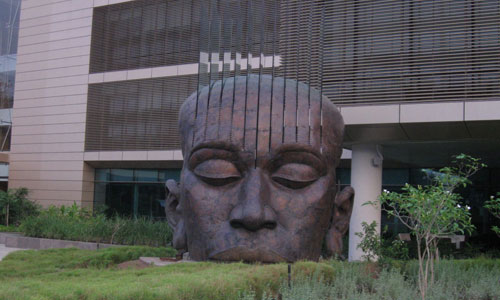 Track2Realty Exclusive: Green building is something that is being over marketed in the Indian real estate. However, while the serious developers have realized its benefits, including fast return on investments, consumers’ literacy on the benefits of paying extra for long term low-maintenance is relatively low.
Track2Realty Exclusive: Green building is something that is being over marketed in the Indian real estate. However, while the serious developers have realized its benefits, including fast return on investments, consumers’ literacy on the benefits of paying extra for long term low-maintenance is relatively low.
Track2Realty noted that the misleading advertisement about green buildings by a few fly-by-night operators is the biggest challenge for green buildings to be accepted as a norm in the Indian market.
Indian Green Building Council (IGBC) believes the concept of green buildings is gaining ground among developers, and nearly 2 billion square feet of sustained building footprint are expected by 2015.
Currently, 1,755 eco-friendly building projects with over 1.21 billion sq ft of green footprint are registered with the IGBC. IGBC is a not-for-profit initiative run by the Confederation of Indian Industry (CII).
It is an arm of one of the Global Rating Systems — Leadership in Energy and Environmental Design (LEED), that has non-negotiable and strict criteria to certify any building as “green”.
“The green concept is becoming very popular among developers as they have realised its benefits including fast return on investments. We expect nearly 2 billion sqft of green building space under development by 2015,” says IGBC Mumbai chapter Vice Chairman Gurmit Singh Arora.
Priority is given to green building projects with regards to clearances from authorities including fire brigades and the civic body for green buildings.
Developers who have opted for green buildings say construction cost of a green building is normally 3-5 percent higher than the conventional building. However, they maintain the incremental cost gets paid back within two-three years with substantial reduction in operational costs.
It is generally accepted that green buildings consume 40-50 percent less energy and 20-30 per cent less water. Besides, the intangible benefits of green buildings include better indoor air quality, enhanced ventilation, better view and ample sunlight that significantly improve the productivity of the occupants.
In states like Maharashtra, the government has also decided to implement a ‘green code’ – guidelines for building eco-friendly structures to promote green buildings. The state plans to implement the green code for government buildings and those of public utilities.
The moot point is whether the end-users are aware about the benefits of green buildings. Are they ready to pay additional initial cost for long term benefits and low maintenance cost?
And, most importantly, to put it straight to the developers—are consumers getting green buildings the way it is projected in advertisements?
Next: Green buildings often Misleading in Indian context





